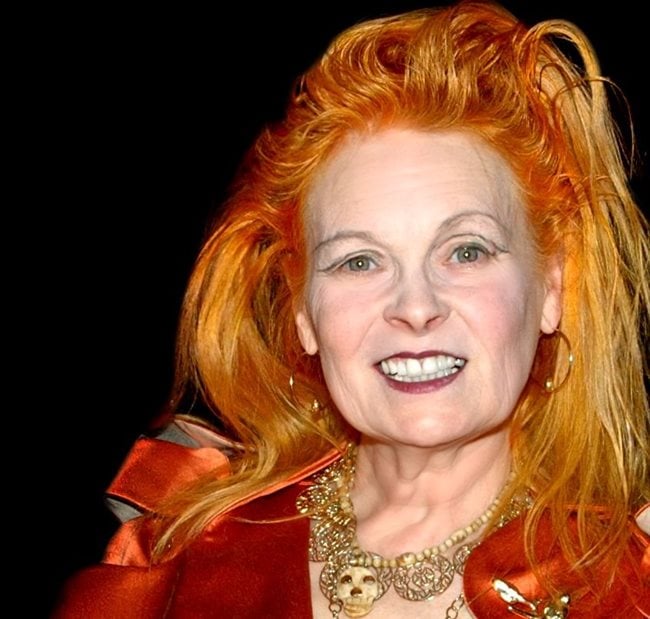
Top stories

Marketing & MediaStranger Things extends record run as all 5 seasons dominate Netflix Top 10
22 hours





The death of the English fashion designer Dame Vivienne Westwood at the age of 81 on 29 December 2022, has not only moved the fashion industry, but the world. Through her designs and her activism, Westwood had a profound impact on fashion and culture.
I, like so many others, credit Westwood for inspiring my passion for fashion. As a teenager, I spent countless Saturdays wandering down the Kings Road in London with the intention of ending up at Westwood’s World’s End store. On these trips I would stroll past groups of punks adorned in bondage trousers, ripped shirts (undoubtedly influenced by Westwood) and spiky hair.
I remember vividly the quirky interior with wonderful clothing and Westwood, herself, often sitting in the store. My first Westwood purchase was an Anglomania tartan waistcoat, which I am wearing now as I write this piece. It is adorned with a pattern that has become a Westwood signature – The MacAndreas tartan, which Westwood named after her husband and creative partner Andreas Kronthaler. The tartan was given official recognition by The Scottish Register of Tartans in 1993.
With Westwood’s death, many might question what will happen to the brand now it no longer has its namesake at the helm. Westwood had a strong and unique vision, could that be lost with her passing? But some brands have managed to maintain a sense of the creative genius of their founders after their death, just look at Christian Dior and Alexander McQueen.
The loss of Dior in 1957 and McQueen in 2010 have shown how the legacy of their work, including their design philosophies, can continue under the leadership of future design directors.
Dior was succeeded by Yves Saint Laurent who had worked for two years under his predecessor’s guidance . Since Saint Laurent’s time at Dior, there have been many subsequent creative directors who have shaped its history including John Galliano and more recently Maria Grazia Churi. But, with each of these changes, a sense of Dior and his vision has remained.
As a couturier Dior was inspired by history, exotic travel and flowers from his garden
outside Paris. These passions continue to be referenced in the work of his successors, ensuring his legacy continues.
Similarly, Sarah Burton, who designed alongside McQueen for 14 years, took the helm as creative director for the label following his death. Burton has ensured that the drama and extravagance that defined McQueen’s work continues today.
Take the Spring 2023 show in which Burton referenced Hieronymus Bosch’s painting Garden of Earthly Delights. Bosch’s demons featured in the last show of McQueen’s, which took place after his death.
Like Dior and McQueen, Westwood’s legacy is secure in the hands of a designer who has worked closely with her for years, in this case her husband Andreas Kronthaler. Their personal and creative partnership has seen a meeting of minds through a shared vision for the Westwood brand and passion for design, art history and inspiring future generations.
More recently, Kronthaler took over the role of creative director overseeing the designs for Westwood’s collections, allowing Westwood more time to focus on other causes. At the most recent presentation for spring/summer 2023 in Paris, Westwood was notably absent and Kronthaler took on the role of walking down the catwalk at the end and accepting flowers.
In a statement released after Westwood died, Kronthaler stated:
I will continue with Vivienne in my heart … We have been working until the end and she has given me plenty of things to get on with. Thank you darling.
Westwood has created a brand that is unique, radical and rebellious and through Kronthaler’s creative vision there is hope that the spirit of Westwood will live on.
Westwood was a self-taught designer who was known for her radical and deviant style.
Her first real foray into fashion came in 1971 when Westwood opened a shop called Let it Rock at 430 Kings Road, London, with Malcolm McLaren, manager of the Sex Pistols. The shop cemented Westwood’s association with punk and, along with McLaren, she was credited for giving the subculture a radical style that was unlike anything before. Westwood’s creations of bondage trousers, ripped t-shirts and provocative slogans made a mark on culture and later mainstream fashion.
From her first show in 1981, Pirate Collection, Westwood subverted the conventions of traditional fashion. Inspired by fashion history she played with historic styles including the corset and the crinoline, creating innovative garments that will continue to influence fashion’s future.
As well as being a leader in transgressive design, Westwood has left a legacy in fashion activism. Never afraid to speak her mind, she was vocal against capitalism and the decline of the environment.
Her activism was at the heart of her global brand. For Westwood, fashion was a way to get people involved in politics and other societal issues.
Westwood’s story is compelling, radical and sometimes controversial. Her work is imbued with a spirit of rebellion and there is hope that with Kronthaler that spirit will continue.![]()
This article is republished from The Conversation under a Creative Commons license. Read the original article.

The Conversation Africa is an independent source of news and views from the academic and research community. Its aim is to promote better understanding of current affairs and complex issues, and allow for a better quality of public discourse and conversation.
Go to: https://theconversation.com/africa